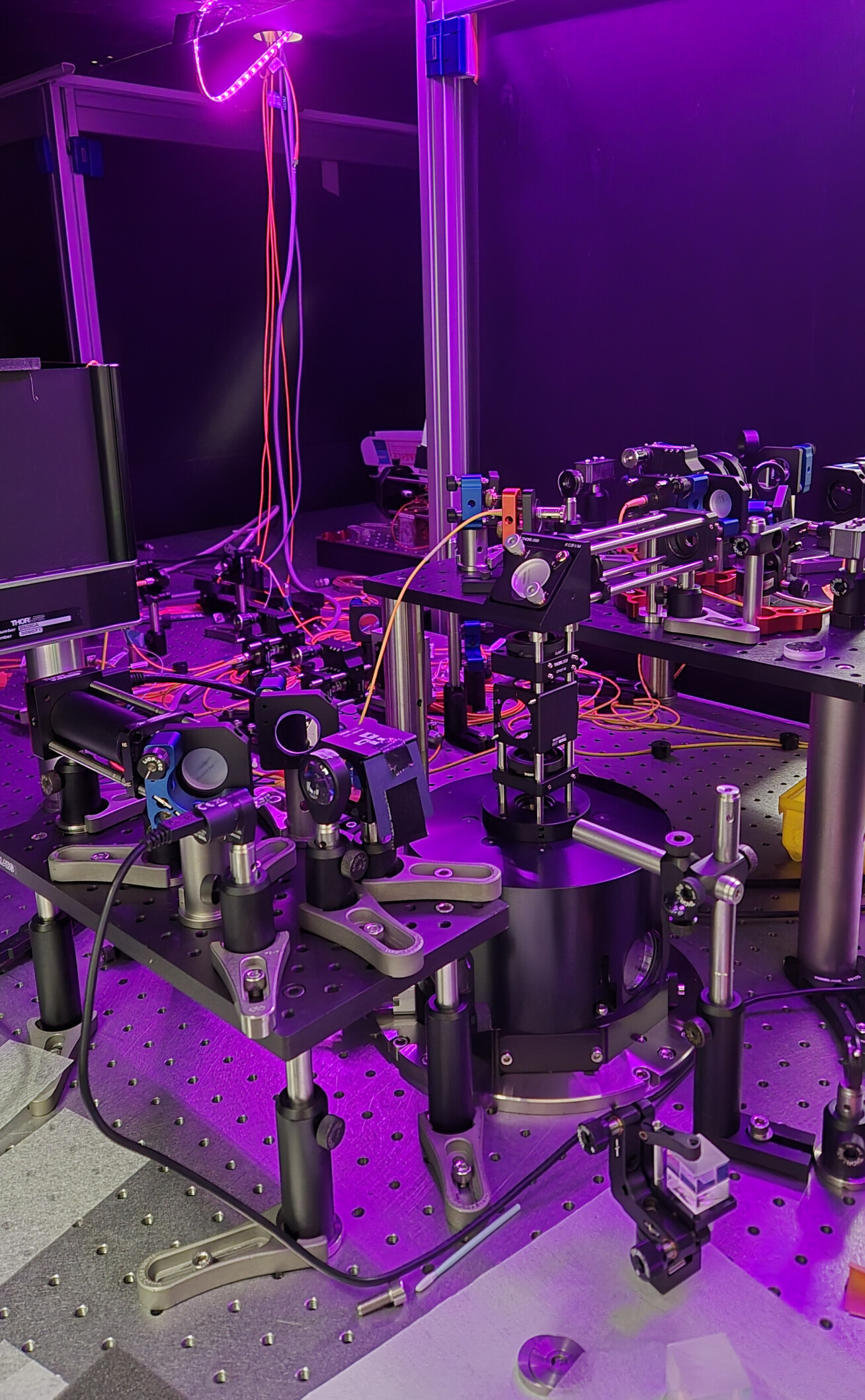Crucial connection for ‘quantum internet’ made for the first time
Researchers have produced, stored, and retrieved quantum information for the first time, a critical step in quantum networking.
The ability to share quantum information is crucial for developing quantum networks for distributed computing and secure communication. Quantum computing will be useful for solving some important types of problems, such as optimising financial risk, decrypting data, designing molecules, and studying the properties of materials.
Interfacing two key devices together is a crucial step forward in allowing quantum networking, and we are really excited to be the first team to have been able to demonstrate this. Dr Sarah Thomas
However, this development is being held up because quantum information can be lost when transmitted over long distances. One way to overcome this barrier is to divide the network into smaller segments and link them all up with a shared quantum state.
To do this requires a means to store the quantum information and retrieve it again: that is, a quantum memory device. This must ‘talk’ to another device that allows the creation of quantum information in the first place.
For the first time, researchers have created such a system that interfaces these two key components, and uses regular optical fibres to transmit the quantum data.
The feat was achieved by researchers at Imperial College London, the University of Southampton, and the Universities of Stuttgart and Wurzburg in Germany, with the results published in Science Advances.
Co-first author Dr Sarah Thomas, from the Department of Physics at Imperial College London, said: “Interfacing two key devices together is a crucial step forward in allowing quantum networking, and we are really excited to be the first team to have been able to demonstrate this.”
Co-first author Lukas Wagner, from the University of Stuttgart, added: “Allowing long-distance locations, and even to quantum computers, to connect is a critical task for future quantum networks.”
Long-distance communication
In regular telecommunications – like the internet or phone lines – information can be lost over large distances. To combat this, these systems use ‘repeaters’ at regular points, which read and re-amplify the signal, ensuring it gets to its destination intact.
Classical repeaters, however, cannot be used with quantum information, as any attempt to read and copy the information would destroy it. This is an advantage in one way, as quantum connections cannot be ‘tapped’ without destroying the information and alerting the users. But it is a challenge to be tackled for long-distance quantum networking.

One way to overcome this problem is to share quantum information in the form of entangled particles of light, or photons. Entangled photons share properties in such a way that you cannot understand one without the other. To share entanglement over long distances across a quantum network you need two devices: one to create the entangled photons, and one to store them and allow them to be retrieved later.
There are several devices used to create quantum information in the form of entangled photons and to store it, but both generating these photons on demand and having a compatible quantum memory in which to store them eluded researchers for a long time.
Photons have certain wavelengths (which, in visible light, creates different colours), but devices for creating and storing them are often tuned to work with different wavelengths, preventing them from interfacing.
To make the devices interface, the team created a system where both devices used the same wavelength. A ‘quantum dot’ produced (non-entangled) photons, which were then passed to a quantum memory system that stored the photons within a cloud of rubidium atoms. A laser turned the memory ‘on’ and ‘off’, allowing the photons to be stored and released on demand.
Not only did the wavelength of these two devices match, but it is at the same wavelength as telecommunications networks used today – allowing it to be transmitted with regular fibre-optic cables familiar in everyday internet connections.
European collaboration
The quantum dot light source was created by researchers at the University of Stuttgart with support from the University of Wurzburg, and then brought to the UK to interface with the quantum memory device created by the Imperial and Southampton team. The system was assembled in a basement lab at Imperial College London.
The breakthrough this time was convening experts to develop and run each part of the experiment with specialist equipment and working together to synchronise the devices. Dr Patrick Ledingham
While independent quantum dots and quantum memories have been created that are more efficient than the new system, this is the first proof that devices can be made to interface, and at telecommunications wavelengths.
The team will now look to improve the system, including making sure all the photons are produced at the same wavelength, improving how long the photons can be stored, and making the whole system smaller.
As a proof of concept however, this is an important step forward, says co-author Dr Patrick Ledingham from the University of Southampton: “Members of the quantum community have been actively attempting this link for some time. This includes us, having tried this experiment twice before with different memory and quantum dot devices, going back more than five years, which just shows how hard it is to do.
“The breakthrough this time was convening experts to develop and run each part of the experiment with specialist equipment and working together to synchronise the devices.”
The research is part of the EU-funded project ‘Qurope: Quantum Repeaters using On-demand Photonic Entanglement’.
-
‘Deterministic storage and retrieval of telecom light from a quantum dot single-photon source interfaced with an atomic quantum memory,’ by Sarah E. Thomas, Lukas Wagner et al. is published in Science Advances.
Supporters
Article text (excluding photos or graphics) © Imperial College London.
Photos and graphics subject to third party copyright used with permission or © Imperial College London.